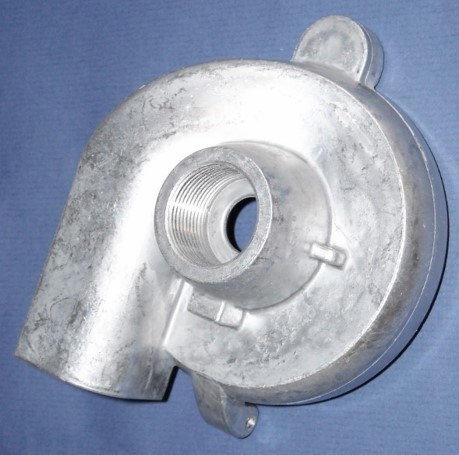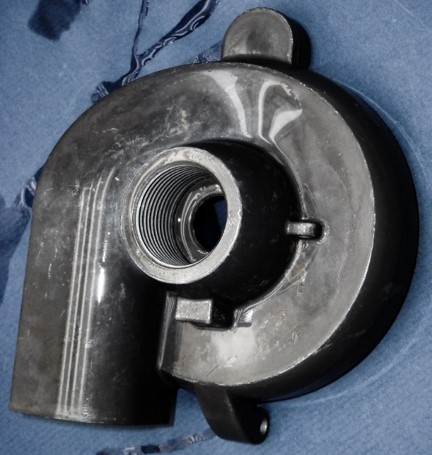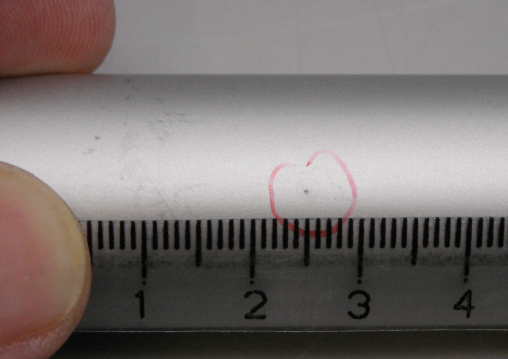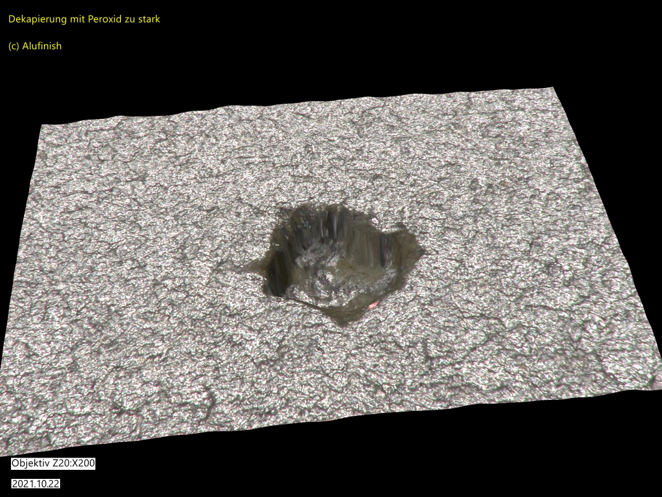As in all chemical pretreatment steps in the anodisation of aluminium, mistakes can also be made in the desmutting process. The following are two examples of errors that can occur.

Raw material, initial state

Material after desmutting
This material was cleaned, briefly alkaline etched and then pretreated in the desmutting bath. Already after etching, the surface showed a complete black coloration in the form of a wipeable layer.

After etching
The assumption to remove this layer by a higher concentrated desmutting based on nitric acid failed, as the use of desmutting additives containing peroxide did. The stained fabric remained black. A comparison with the desmutting effect on other goods showed no problems. The desmutting bath was set correctly.
What had happened?
A look at the raw material quickly revealed the cause of the issue. An aluminium casting alloy with a high silicon content of approx. 12% was used. Due to the etching process, the silicon reached the surface of the material and could not be removed even by a perfectly adjusted desmutting. The coating can then only be removed mechanically or by means of special etching.
To avoid this problem, you should:
...always check the suitability of the alloy (here: casting material) before machining.
...avoid etching for such cases if possible
...as far as possible, use only degreasing and desmutting here
In the second example, isolated, small dots appear on the anodised finished part (here: small aluminium tubes).
The research revealed that these dots were already visible after desmutting. Microscopic examination identified them as small corrosion holes.

Surface with some 0.5 - 2 mm dots

Corrosion point at 200x magnification
This showed that a fresh sulfuric acid bath was used as a desmutting agent instead of the usual spent sulfuric acid containing aluminium. In addition, a high content of peroxide-containing additive was added to maximise the effect of the desmutting. The result was a clean, deposit-free surface, but with visible corrosion spots.
What had happened?
Fresh sulfuric acid (without dissolved aluminium) is already a powerful desmutting agent without further additives. If you also add a high concentration of peroxide-containing additive to it, you increase its effect even more and corrosion reactions can occur on the surface of certain alloys. In this case it was an alloy containing manganese.
To avoid this, the following should be observed:
...if uncontaminated, fresh sulfuric acid is used as a desmutting agent, one should first start without or with only a small amount of additive containing peroxide.
...if the amount of additive is then too low, it should only be increased step by step,
...especially with high-quality surfaces, you should know the alloy and, if necessary, carry out preliminary tests.
Download the brochure now

Save this article as PDF
This article is also available as a PDF in English. Download now free of charge.
